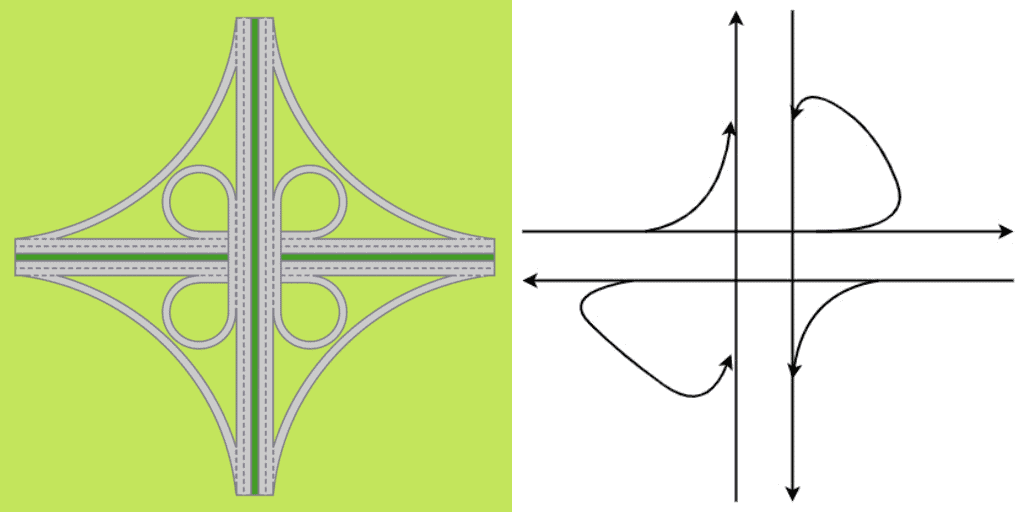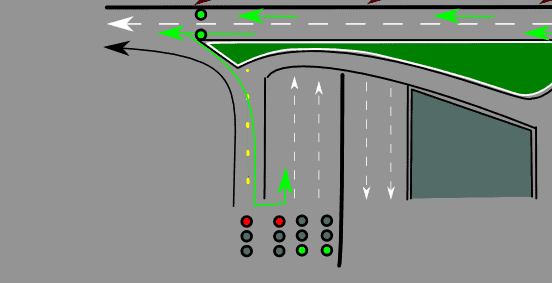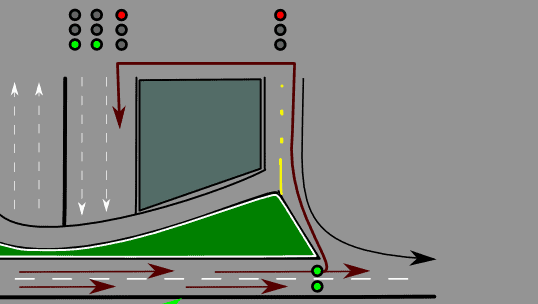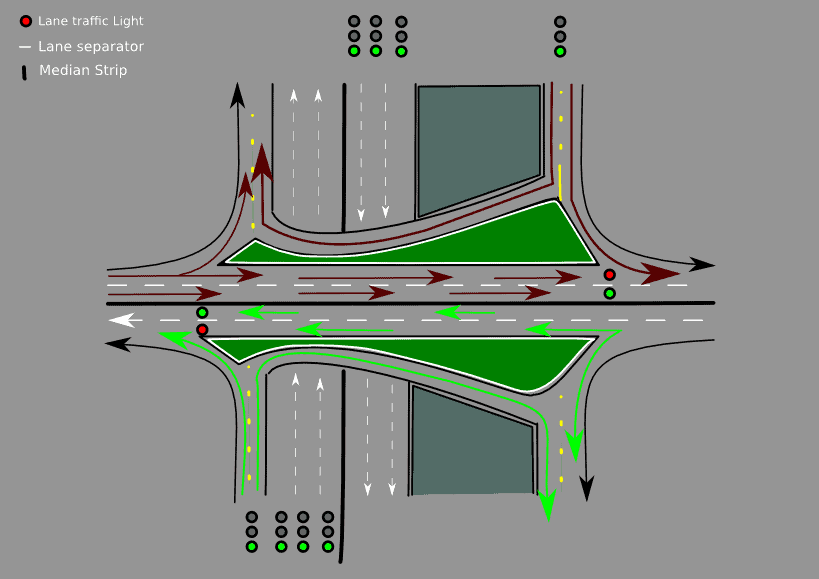It’s no misnomer that Bengaluru is the Silicon Valley of India. Our daily commute around Marathahalli junction can deposit small quantities of raw materials on our body that can build up to ingredients in the manufacturing process of a semiconductor. Maybe, because of this, people working in the IT corridor exhibit some semiconductor-like properties in their work communication – “Stuck in traffic”, “In late today”, “Leaving early”, “Work from home” etc. Does this sound familiar?
Marathahalli junction is among the many knotted intersections that connect to the city’s IT hub along ORR (Outer Ring Road). The bridge here was built to cross a short distance, but only adds to our daily commute time. According to ORRCA (Outer Ring Road Companies Association), nearly a million people (or about 10% of Bengaluru’s population) are employed in offices along the 17-km stretch of ORR between Silk Board and KR Puram.
As the city – and its traffic jams – are gradually returning to normal post COVID-19 lockdown, I suggest an alternate plan to regulate traffic at Marathahalli bridge and hopefully reduce congestion. In this article, I explore whether minor alterations to traffic flow, coupled with enforcement of lane discipline, can help ease our commute woes at this junction.
What could be an immediate solution?
Long-term residents of this area attribute the snarled-up traffic to exponential growth of the city, increase in motor vehicles, migration, poor quality of roads, narrow lanes and so on. While these could be true to an extent, it’s unlikely that any of these variables would change even in the long term.
What we could do instead is to plan our commute, educate and enforce lane discipline, and make some adjustments to the existing road infrastructure. At Marathahalli junction, an adjustment could be to introduce a cloverleaf interchange.
Cloverleaf interchange is a mechanism in which motor vehicles can merge or exit from highways using ramp lanes (or service roads as we say in Bengaluru) without having to criss-cross oncoming traffic. These kinds of traffic route bridges are fairly common in India and many developed countries.

Right: Cloverleaf exchange proposed at Marathahalli junction
Existing traffic flow
Below is a schematic of Marathahalli Bridge as seen in OpenStreetMap; arrows indicate the direction of traffic.

As seen in the picture above,
- Traffic at the bridge that’s flowing from HAL airport side cannot easily drive south to the ORR stretch that leads to Sarjapur road. They have to go further down the bridge towards Varthur Road and then make a U-turn about 1 km away, blocking traffic on either side.
- Similarly, traffic over the bridge that’s coming from Varthur road can’t easily go towards KR Puram side. These vehicles will have to first go towards HAL side, and then take a U-turn to get down to ORR and then on to KR Puram side.
Proposed flow
To set up the cloverleaf exchange, only two signals need to be introduced on the bridge, as shown below. With this, vehicles from both Varthur and HAL directions can move on to service roads (which are currently one-way roads in the opposite directions), and then on to ORR.

- From Varthur Road to ORR (KR Puram side)
The new traffic signal is proposed at the intersection of the bridge and service road. With this, vehicles coming from Varthur side can use the ORR service road, and then move on to the ORR stretch towards KR Puram. This could improve the speed of vehicles on ORR, and improve the capacity handling of the service roads.

- From HAL Road to ORR (towards Sarjapur Road)
Similarly, another traffic signal can be introduced on the opposite side, for vehicles coming from HAL side. Here too, the vehicles can move on to the ORR service road, and then to the ORR stretch leading towards Sarjapur Road.

Benefit for vehicles on ORR service roads too
Vehicles that get on to the service road from ORR would benefit from this model too. With the new traffic signal on the bridge, they could possibly take U-turns to the parallel service road (as indicated below).

This would streamline the traffic flow from one service road to the other, and reduce the risk of accidents. Since nearly 70% of commuters would be using two-wheelers, allocating a stretch of space at the signal for two-wheelers would ensure their safety while enabling other motor vehicles to move quickly when the traffic light turns green.
Here’s what the changed scenario would look like:
Other factors that could improve traffic flow
- Bus stops at the intersection of the bridge could be moved to reduce footfall over the bridge.
- Providing footpaths could reduce the number of people walking on the streets, thereby ensuring smooth flow of traffic.
- Restricting the flow of public vehicles on the service roads during peak hours.
[Disclaimer: This article is a citizen contribution. The views expressed here are those of the individual writer(s) and do not reflect the position of Citizen Matters.]
Very good thinking. In travel in ORR everyday and understand the pain. I hope the authorities seriously take your suggestion.
The Bureaucrats who should implement any such changes ask: “what is in it for me?”
Actually, given the junction topology, the traffic can be well managed with just one Traffic signal – That is of course provided the govt put up proper signal boards and people follow basic lane sense: check out the image below – the red line will be the signal crossing.
https://ibb.co/FD7V3gX
It would be more effective if it is a named signal
Sir, what about vehicles coming on Orr going to vartur road, coming from krpuram going to hal road.
Lets also consider people from from OOR-Sarjapur side and wants to turn to Vurthur side… stil that going to be same even in proposed model.
Other than the suggestions here, I think there are just too many pedestrians and lots of slow moving traffic, parked cars etc. arond these areas.. So sooner or later traffic will chokeup once the volume increases even slightly..
The backups on these junctions should not flow back and cause jams on ORR..
A more drastic solution, but much needed solution. would be to move out all the shops, etc, that face these main roads, as well as on the exits and service roads. This will remove all the pedestrians and general crowding, that causes the traffic to slow down. These should be moved into seperate malls or more interior roads, that are not on the main arteries.
This can be done in a phased manner, by giving incentives to many of these shop owner to move out and closing down illegal constructions etc.
Doing this will increase the average speed of traffic, and improve the efficiency of our roads, and also remove the need for unnecessary road widening or other expensive infrastrcture projects..
I think this is much needed all over Bangalore. Even in newer and expanding areas, I see many shops sprouting up along the side of the busy roads. For instance along the back route to the airport.. This would be the time, for the government to step up and plan around these areas, so they dont become a mess in the future, and the tax payer doesnt have to be unnecesarily burdened with having to support more infrastructure projects..
From Varthur Road to ORR (KR Puram side) – The problem with this proposal is, the left u-turn from service road to main road will take 2-lanes even for most cars. It will not smoothly merge into the left-most lane as shown in the picture. Even the other left turn at Kalamandir is not smooth.
1) Urgently need foot-over bridges at all four sides. We got two now.
2) Bus stops – need to be further away from the merging points and turnings. It will be even better, if they can find better places off the road.
3) For Varthur-KR Puram, allow the traffic to go straight and take right turn at Doddanekkundi main road. This is already followed many folks, can be official.
An out of the box solution would be to raze the badly planned construction by Puravankar and similar builders who’s only goal is profit and zero concern for the environment Urban Planning Design , the flatowners or Bangalore city and its garden city environs and officials who cared as little too .To ensure that citizens stop allowing Greed to flourish & develop a strong citizens lobby against unscrupulous Builders who despite the hideous monsters they have built , believe they have done a great service to the city . Please remind them so such constructions aren’t repeated any more .
Your so called out of the box solution involves the demolition of hundred’s of apartments . Have you thought of the human cost of this or you just concerned that you have to otherwise drive an extra KM in your car to reach office ??
There’s no need for any authorities to implement any new rules. As it was before let’s all fallow trafficking rules correctly. If violated charge heavy fines untill then our citizens newer fallow lane discipline to stop and allow others to pass by.
Seek solution from IIMB and IISc first. BBMP has to use good brains to sort out and solve critical problems.
This is what existing there from day one. But, in between some one change this for whatever reason, and now we are staring at current scenario and find ways to avoid extra long distance travels.
Hi this route from Marathahalli to her and varthur towards kr puram was open then duevto traffic they closed long back I think with traffic light and traffic cops monitored they can open again
Hi for the above flow to work perfectly 1 concern has to be addressed.
The proposed flow reuses 2 stretches for traffic to flow in both directions. And makes use of handshaking between 2 traffic signals. If any motorist starts early before the signal turns green or fails to stop when the signal turns red, he blocks an entire flow of incoming traffic from opposite direction. Which causes a pile up which will take a long time to clear. In the present scenario where traffic rules enforcement are weak and people are unwilling to follow rules. The proposed flow can only cause problems.
Also the proposed flow is inconsistent with the easily recognizable drive left rule in the country.
Also public transport like buses,cannot be restricted at particular times like peak hour times. As peak hour is common both to public transport users as well as private transport users.